by Jim Lobe
As part of a continuing inquiry into Donald Trump’s National Security Adviser-Designate Gen. Michael Flynn (ret.), here’s a passage in his book co-authored by Michael Ledeen, on the alleged nuclear plant at Al Kibar in Syria that Israeli air strikes presumably destroyed in 2007. The passage illustrates his analytical skills, the acuity of his argumentation, the precision of his language, and the reliability of his sourcing (as more recently illustrated by his tweeting about Clinton and child pornography). The passage, which is all too typical in its opacity, speculation, and questionable sourcing, comes in the context of his discussion of alleged Iranian-North Korean nuclear collaboration:
[I]n early September 2007, Israeli forces allegedly destroyed a potential nuclear weapons site in Syria that was under Iranian operation and had benefited from North Korean technological assistance.
At the time, I was the senior intelligence officer at the United States Central Command. We spent many sleepless nights planning a series of operations to strike these facilities. The more I studied the extensive construction, the number of sites, the connections between North Korea and Iran as well as the operations security that kept these facilities hidden for nearly ten years right under our noses, I grew more irritated and angry than being simply disappointed in our intelligence system. Missing this site was beyond an intelligence failure, it could have caused a nuclear war in the Middle East.
And according to the German press at the time—Der Spiegel—there were at least two other nuclear weapons facilities in Syria as a result of Iranian-North Korean efforts. One was an underground location near the Lebanese border. The other was said to be at a “secret location.” In the end, we were lucky the Israelis decided to attack and destroy Al-Kibar—today, the Islamic State (IS or ISIS) owns that territory and would likely own a nuclear weapon.
Hardly an expert on nuclear issues myself, I asked Robert Kelley, who has done considerable research on the alleged Syrian nuclear program, to comment. Kelley is a bona fide expert on things nuclear, particularly in deciphering signals of nuclear-related activity from satellite photos. He has been the leader of a foreign intelligence analysis group at Los Alamos and a chief inspector of Iraqi nuclear programs at the International Atomic Energy Agency (IAEA). Along the way, he has been a research reactor supervisor, a plutonium facility manager, and a director of the DOE Remote Sensing Laboratory at Nellis Air Force Base. He currently writes on non-proliferation for a number of publications and is an associate research fellow at the Stockholm International Peace Research Institute.
With regard to Flynn’s first sentence, Kelley explained that he had at least one major problem: “There is simply no evidence that Iran was involved with the Syrian Al Kibar facility, let alone supervising it. This is pure, unsubstantiated speculation,” he said.
As for the second paragraph, it not only is just plain confusing from a grammatical point of view, but also provoked considerable consternation on Kelley’s part for substantive reasons.
On the grammatical side, you’ll note that in the previous paragraph, he refers to one “site” in Syria. But that one site is suddenly transformed into “these facilities.” He then refers to a “number of sites”—again using the plural—without clarifying what sites he is talking about. Even the most intuitive of intelligence analysts would find this antecedent disagreement confusing, to say the least.
On the substantive side, Kelley challenges the various assertions contained in the second paragraph:
There was no “extensive construction” at the al Kibar site, nor were there “multiple sites” there or in the vicinity. It is an area of coal mines, and IAEA found coal particles on the site. It consisted of one building and a nearby shed that had been under construction for years and that was identified by the US and bombed by Israel. It had some similarities to a reactor facility in North Korea although it differed in both size and shape. The building had almost no supporting services (unlike its supposed DPRK analog) and no security, which is quite remarkable given its alleged strategic importance! Perhaps Flynn is referring in his plural “sites” to one identified by the press near Damascus at Marj al Sultan. That site has been mistakenly confused with nuclear activities but is not a nuclear site. It is a military vehicle depot lacking nuclear industrial satellite imagery signatures. Another military truck depot in the north, which has been touted in the press as a nuclear site, has also lacked any supporting evidence. Nothing else has been identified by any reputable source.
As to the assertion that the Al Kibar facility had been “kept …hidden for nearly ten years right under our noses,” there is publicly available satellite imagery of the site going back to 2001 or 2002. It had been noted as an unusual building and was being monitored. The former Director General of IAEA says US intelligence community analysts were discussing the site at least a year before it was bombed (without alerting IAEA.) It is astounding that the senior intelligence officer at U.S. Central Command at the time—and subsequently head of the Defense Intelligence Agency—was not aware of the fact that the site had been subject to satellite scrutiny for years and now brags about his ignorance in this book.
As to the third paragraph, the one that cites the Spiegel article, it, too, suffers from serious problems beginning with ambiguity about when the article was actually published. (The book contains no footnotes.) When Flynn writes that the article came out “at the time,” the obvious suggestion, based on the two preceding two paragraphs, is that it was published when he was the senior intelligence officer at CENTCOM; that is, back in 2007 when the Israelis carried out their attack. In fact, according to Kelley, the only Spiegel article to which the assertions in this paragraph could be referring is one that was published in January 2015, when Flynn had already retired. (In addition to footnotes, the book could have used a decent proofreader.)
But there are other problems with this paragraph, as Kelley points out, not least the fact that the sources are entirely anonymous and that such explosive assertions have appeared nowhere else since its publication, not even in IAEA reports that continue to cover Syrian activities.
But the notion that the Syrian government, in the middle of a bloody civil war and—subject to repeated attacks by Israeli missiles and aircraft targeting suspected sensitive weapons facilities and shipments that might enhance Hezbollah’s arsenal—would build a strategic facility such as a nuclear reactor in a tongue of land almost entirely surrounded by Lebanon defies any common sense. Moreover, there is not a single indicator in satellite imagery of the alleged site that this is a nuclear plant. On the contrary, the imagery strongly suggests it is not a reactor. Indeed, every material factual assertion made by the author in the Der Spiegel article was thoroughly rebutted in the January 21, 2015, issue of Jane’s Defense Weekly. That Flynn prefers unknown German writers citing completely anonymous sources over a publication with well-established expertise on nuclear weapons and extensive contacts with the relevant intelligence agencies tends to confirm that his biases outweigh any respect for true intelligence professionals who know the field.
As to the assertion that “If Israel had not bombed the site [at al Kibar] ISIS would own a nuclear weapon today,” Flynn appears unaware that a functioning nuclear weapon requires a huge infrastructure far in excess of what was found at Al Kibar, according to Kelley.
An (unfinished) reactor requires support facilities such as fuel supply and fabrication. There were none. Extracting plutonium requires a chemical reprocessing plant for handling highly radioactive materials. There was none to be found. The weapons program itself would be extensive with many intelligence signatures but there were none. ISIS would in no way own a nuclear weapon today, and the claim that they would is utterly irresponsible and highly inflammatory.
In short, Gen. Flynn may have been highly effective at coordinating operations to speedily track down and kill or apprehend suspected al-Qaeda and Taliban cells in Iraq and Afghanistan. But in assessing nuclear weapons programs and in separating actual facts from sheer speculation or prejudice—let alone in presenting information and context clearly and logically (or chronologically)—he is sorely lacking. Caveat emptor.
Facility at Al Kibar, from a CIA video

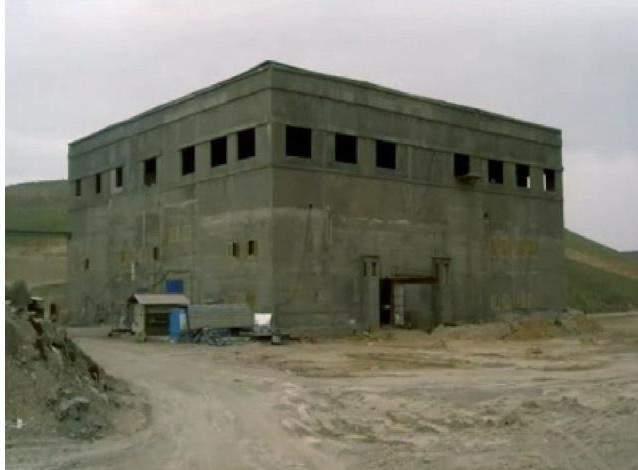
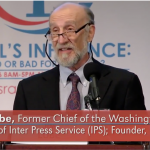
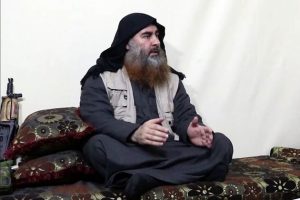
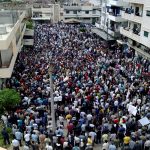
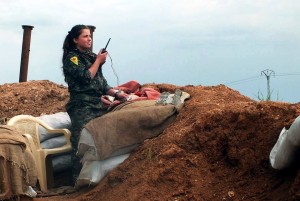
North Koreans were at the site. That was well substantiated at the time. North Koreans built it — not the Syrians. North Korea at the time was selling missiles to Iran and exchanging information/technology on nuclear weapons. Flynn might be faulted for his grammar, syntax, etc., as you delight in doing, but all that’s well known — not only from from Israelis but also U.S. sources at the time. North Koreans too.
I am an engineer with seven years engineering training at a top university, and have studied nuclear technology and Middle East nuclear proliferation issues with the mentoring of a nuclear engineer. The very idea that that building was constructed to contain a nuclear reactor is absurd for multiple reasons. It is far too small. The shape and abundance of windows are totally unsuited, and if it was argued that the shape of the building was chosen to conceal a spherical containment structure that would lead to an even tinier “reactor”.`Any serious type of nuclear weapons production facility is on an utterly different physical scale, unless the goal was to produce a weapon in perhaps 200 years.
Donald Kirk: Your comment has the same faults as Flynn’s book. You say: “North Koreans were at the site, that was well substantiated at the time; North Koreans built it.” Well, substantiate it now by giving us references to authoritative sources. “North Korea at the time was selling missiles to Iran”. What is the relevance of that to the presence or absence of a nuclear reactor in Syria? “North Korea was exchanging information/technology on nuclear weapons.” With whom? Is there any evidence of such an exchange with Syria? If so, produce it. If you mean with Iran, surely you must know by now that Iranian religious and political leaders have been totally opposed to nuclear weapons for many decades, and that the “possible military dimension” of Iran’s nuclear program consisted of an unauthorized program of research into some dual-use technologies of possible relevance to nuclear weapons, but not involving nuclear materials, that Rouhani closed down when he became nuclear policy chief in 2003.
‘How the Israeli/Israeli Lobby ‘Clean Break Dream’ perished in Aleppo’
Israel and Saudi cooperation on the attempted Balkanization of Syria, a repeat of the Neocon plans on Iraq
======
‘The End of Political Judaism and 1P1V1S’
WHEN: Saturday Dec 17 2016, 2:00 – 3:15 pm
WHERE: Otay Branch San Diego Public Library,
3003 Coronado Ave, San Diego, Ca 92154
WHO: Dr Lance Dale
Topics:
‘Welcome to Apartheid Israel’ – Tzipi Livni Nov 16, 2016
Livni’s surrender of 1- retained Settlement Blocs, 2- the Wall, and 3- ending of Palestinian Right of Return
Obama’s Greenlighting of the UN Sec Co Resolution against Israel triggered by the Palestine Annexation Law/(Amona)
The 3 Existential Events (seen as such by Israel itself) for the Collapse of Israeli Apartheid:
The Iran Nuclear Deal, UN Sec Co Resolution against Israel, and the ICC
‘The 3rd Israeli Generals Revolt (CIS) vs Bibi and the Settlers’
-The Commanders for Israeli Security (CIS)
‘The Diskin/CIS UN Chapter 7 Plan and the Dismantling of Israeli Apartheid’
The Israeli Civil War:
‘Obama and the CIS vs Bibi, Adelson and the Settlers’
‘1P1V1S (-One Person One Vote One State) replacing Apartheid’
-Marwan Barghouti and 1P1V1S from Shining River to Shining Sea
Political Judaism and Kahanism in Israel and the US – Settlers, the Kahanist Alt Right, and the Israeli Lobby/Jewish Lobby’s Islamophobia cottage industry
‘The Successful 2nd American Revolution of 4-2-15 and the Iran Nuclear Deal’
‘How the Israeli/Israeli Lobby ‘Clean Break Dream’ perished in Aleppo’
Q and A after talk…
Who is the audience for this book? Clearly not anyone with a background in nuclear engineering or detailed knowledge of recent West and Central Asian history. Do Flynn and Ledeen actually believe these nightmare fantasies they are spinning, or are they wanting to excite and spread an anti-Muslim ideology among those without the skill or depth of knowledge to question their shoddy work?